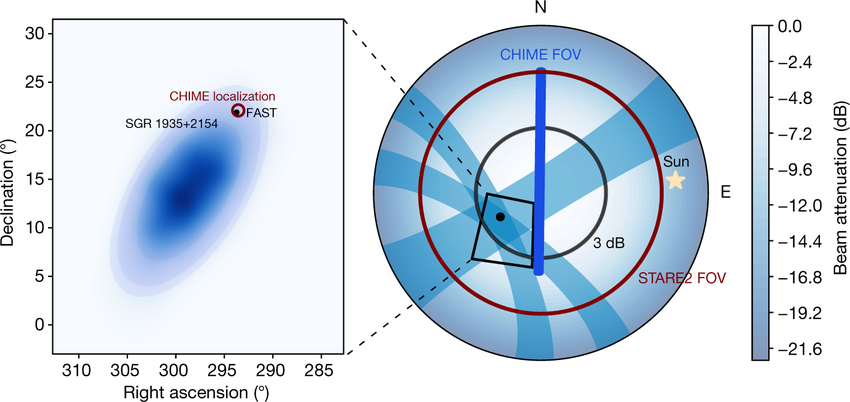Astronomers have recently observed a magnetar within our Milky Way galaxy displaying unexpected pulsar-like behavior, an exciting development that deepens our understanding of the universe’s most magnetic bodies. This observation, designated FRB 20200428, captured by the Five-hundred-meter Aperture Spherical Radio Telescope (FAST) in China, marks a significant milestone as the first-ever “galactic fast radio burst” (FRB) sourced directly within our galaxy.
The phenomenon of fast radio bursts—intense, fleeting flashes of radio waves from space—has long puzzled scientists. Typically traced to distant galaxies, their origins remain enigmatic, making the study of these bursts both challenging and intriguing. However, the recent detection of an FRB from the magnetar SGR J1935+2154, positioned about 30,000 light-years away near the supermassive black hole at our galaxy’s center, provides unprecedented proximity for observation. This proximity allows astronomers to test theories about the nature and origin of FRBs with much greater accuracy.

The key to this discovery was the observation of the magnetar emitting an FRB while briefly behaving like a pulsar—a rapidly spinning neutron star that emits beams of electromagnetic radiation. This behavior supported the hypothesis that magnetars could indeed be sources of FRBs. The research team monitored SGR J1935+2154 intensively following the FRB event, noting that the magnetar entered a brief “radio pulsar phase.” This phase provided crucial data, differentiating the FRB’s characteristics from typical pulsar emissions and suggesting distinct underlying mechanisms.
The detection of different emission modes from the same cosmic object is particularly revealing. It suggests that magnetars can exhibit complex behaviors, transitioning between emitting massive bursts of energy and acting like traditional pulsars.
This breakthrough is pivotal for several reasons. Firstly, it strengthens the link between magnetars and FRBs, suggesting that these highly magnetic neutron stars could be a common source of the mysterious bursts, potentially answering some of the longstanding questions about where and how FRBs are produced.
In conclusion, this observation not only serves as a crucial step in solving the puzzle of fast radio bursts but also enriches our understanding of the stellar remnants known as neutron stars, particularly magnetars. As research progresses, each new finding like this brings us closer to deciphering the vast, mysterious expanse of our universe, one burst at a time.



















